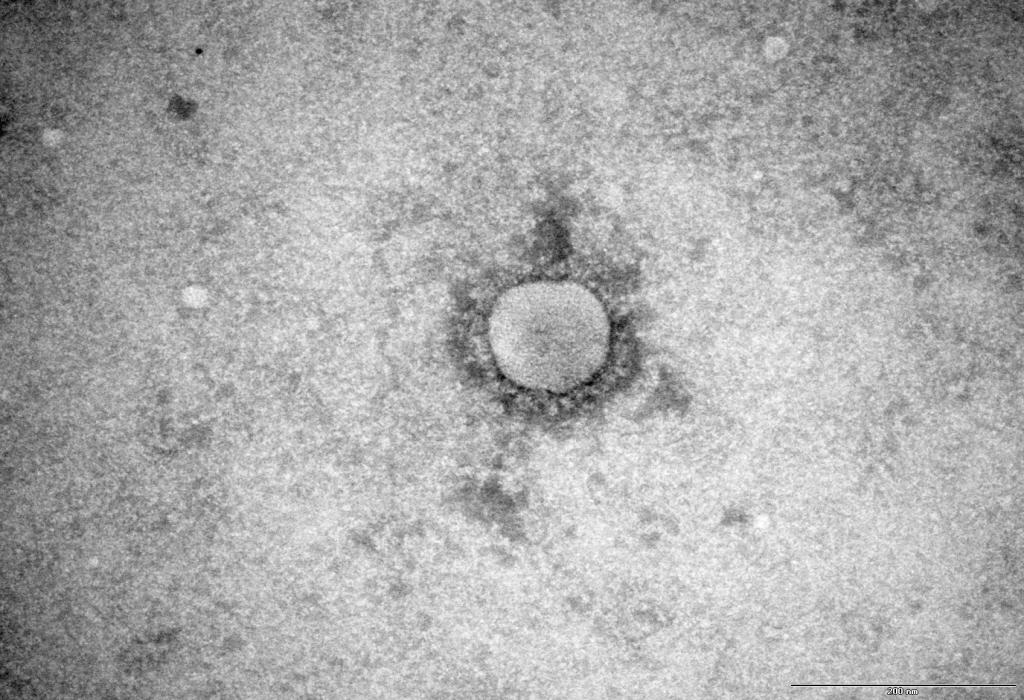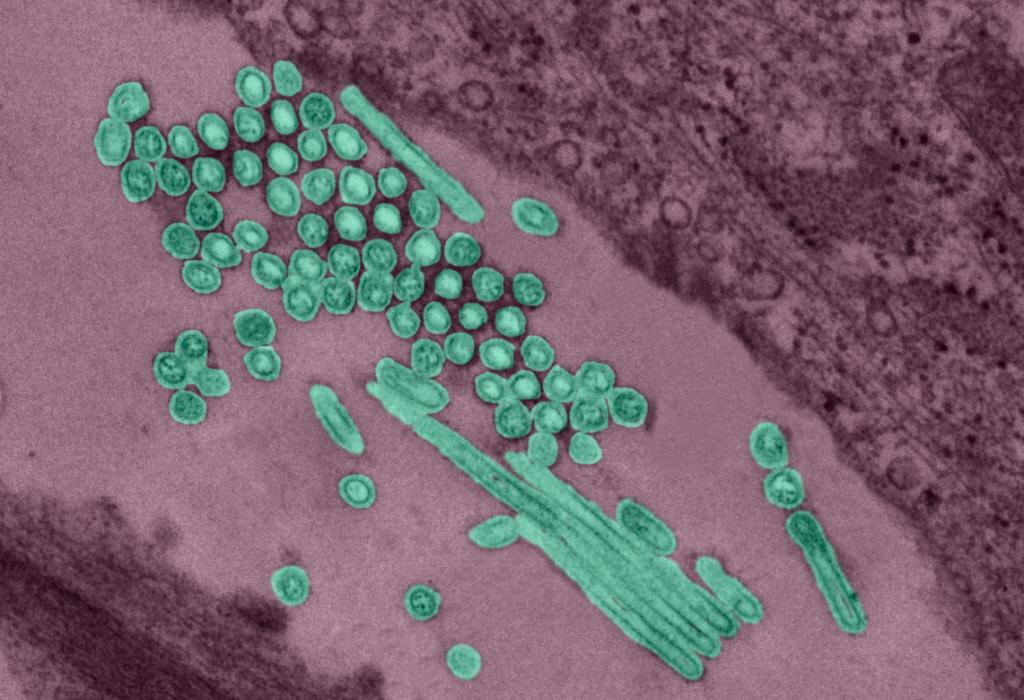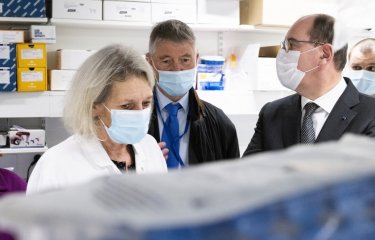The 31 partners involved in the two major European research programs PREDEMICS and ANTIGONE are to meet for a joint seminar at the Institut Pasteur on November 6th. These two programs will respectively receive €11.7 million and €12 million funding of the European Union over five years to study the emergence mechanisms of infectious diseases in order to strengthen existing treatment and prevention. Since their launch, PREDEMICS and ANTIGONE have been active in various areas, in particular for modeling the spread and evolution of emerging pathogens and for studying host-pathogen interactions.
Press release
Paris, Novembre 5, 2013
An emerging disease is a new disease, usually caused by an infectious agent, that surfaces and spreads within the human population. The term may also apply to other, older diseases or diseases that have all but disappeared and subsequently re-emerge or colonize other geographical regions following environmental changes.
With the new coronavirus, MERS-CoV, and avian influenza, the epidemic threat has never been higher: according to WHO, one new disease emerges in the world each year. The ever-increasing mobility of people and goods is partly responsible, since it invariably brings with it a rise in the propagation of infectious diseases. Now more than ever before, infectious diseases represent a considerable public health issue and could lead to potentially serious economic consequences.
In the face of the threat posed by emerging diseases, the European Union is supporting two large-scale research programs: PREDEMICS and ANTIGONE.
PREDEMICS
With €11.7 million of European Union funding over a five year period (2011 - 2016), PREDEMICS unites 17 partners. The project is coordinated by Sylvie van der Werf of the Institut Pasteur.
The program is studying four types of viruses from the animal reservoir that have a high potential for human transmission in Europe (influenza, hepatitis E, rabies, Japanese encephalitis and associated flaviviruses). Its primary objective is to reinforce our understanding of the complex mechanisms governing host-virus relationships and define the major stages in disease emergence in order to improve the prevention strategies to be put in place.
ANTIGONE
ANTIGONE unites 14 partners and has a total budget of €12 million over a five year period (2011-2016). The program is coordinated by Thijs Kuiken of the Erasmus University Medical Center in Rotterdam.
The ANTIGONE program aims to determine the factors involved in the threat posed by pathogens originating in the animal world. The teams involved are particularly interested in the mechanisms by which viruses and bacteria cross the species barrier and spread to humans. The results of this knowledge will improve our ability to predict potential human pandemics of zoonotic origin and to develop timely preventive measures.
Understanding, modeling and anticipating emerging diseases

In another example, in a study published in Clinical Infectious Diseases2, scientists at the University of Münster, in Germany, and the University of Košice, in Slovakia, analyzed the current epidemiological status of a highly virulent strain of Enterohemorrhagic Escherichia coli. Known as O26:H11, it is responsible for numerous cases of kidney disease in young children. The scientists concluded that this strain is rapidly developing in Europe and represents a threat to public health. Recognizing the emergence of the disease is the first step in the implementation of strategies to fight this bacterium.
ANTIGONE and PREDEMICS are also concentrating on the development of tools for modeling emerging diseases. Amongst other things, these tools can be used to determine the factors responsible for the spread of a disease, and in what proportion. This information is essential for drawing up a strategy for fighting and controlling pathogens. For example, in an article in the journal BMC Infectious Diseases, scientists from the Institute for Scientific Interchange in Turin (Italy), in association with Inserm, the Pierre and Marie Curie University and the London School of Hygiene, showed the importance of the combination of two parameters - age and travel patterns of infected individuals - that play a significant part in the spread of influenza viruses. In particular, from a detailed study of data from the 2009 influenza A pandemic, they noted that the virus was mainly introduced into a given region by adults, but then spread by children, who more readily show disease.
Le décryptage des interactions hôte-pathogène

Understanding the interactions between a pathogen and the organism it infects (the host) is of primary importance. Such an understanding enables characterization of the molecular players involved in the occurrence of infection, which are potential targets for the development of both treatment and vaccines. With this aim, scientists at the Institut Pasteur and Paris Diderot University have developed an effective tool for mapping pathogen-host interactions: in their study, published in Molecular & Cellular Proteomics4, the scientists managed to identify the specific human proteins that interact directly with the Influenza A virus polymerase, a protein that is essential for the replication of genetic material.
Decoding host-pathogen interactions also provides an understanding of how a pathogen circumvents the host's immune system, thus enabling the infection to take root. This is the focus of a project carried out by teams from France (including several scientists from the Institut Pasteur), Japan and Australia, and published in Journal of Virology5. The scientists proved that the previously identified strategy used by the rabies virus to escape immune defenses is used by all viruses belonging to the Lyssavirus genus (rabies-related viruses, several of which are emerging viruses with deadly implications for humans). This discovery has led to the identification of new potential therapeutic targets for all members of the Lyssavirus genus.
Host-pathogen interactions also provide insight into the emergence potential of a disease. An article in The American Journal of Pathology6 gives an account of a discovery made by scientists from the Erasmus University Medical Center in Rotterdam, showing the epidemic potential of the emerging H7N9 strain of avian influenza. The scientists observed a high capacity for this virus to bind to human epithelia of the lower respiratory tract in line with the severity of infections, as well as to the upper respiratory tract epithelium which is required for effective transmission between people.
Arboviruses - emerging pathogens in Europe

Many of the arboviruses, which are viruses transmitted by blood sucking arthropods (mosquitoes, ticks and sandflies), are posing a growing epidemic threat in Europe. The mosquito vectors responsible for the spread of chikungunya, yellow fever, dengue and West Nile virus are gradually extending their range into Europe's temperate regions, including France.
In a study published in Clinical Microbiology and Infection7, scientists at the University of Bologna have given an assessment of the current status of West Nile virus in Europe: over the last 20 years this virus, which is potentially fatal and can cause serious neurological complications, has been responsible for a number of sporadic epidemics in humans, horses and birds. It would also appear that the virus is rapidly extending its geographical range. In their conclusion, the scientists stress the need to implement veterinary and entomological surveillance mechanisms for monitoring the emergence of this disease.
PREDEMICS and ANTIGONE - research projects dedicated to public health
In the face of the growing threat posed to our societies by emerging diseases, it is clear that the different lines of research undertaken as part of the PREDEMICS and ANTIGONE programs are essential in the fight to preserve public health. The first results obtained by these studies focus in part on strengthening epidemiological surveillance mechanisms via the improvement or development of tools for modeling or predicting emerging diseases. In addition, the work also concentrates on developing new therapeutic strategies as a result of the discoveries made regarding the host-pathogen relationship. The research seminar scheduled for November 6th at the Institut Pasteur is an opportunity for the partners in the PREDEMICS and ANTIGONE programs to draw up an overall review of the progress to date and the challenges that must be met in order to be better equipped to fight emerging infections.
Source
1 Middle East respiratory syndrome coronavirus neutralising serum antibodies in dromedary camels: a comparative serological study, Lancet Infectious Diseases, August 9, 2013.
2 Enterohemorrhagic Escherichia coli O26:H11/H−: A New Virulent Clone Emerges in Europe, Clinical Infectious Diseases, October 24, 2013.
3 Age-specific contacts and travel patterns in the spatial spread of 2009 H1N1 influenza pandemic, BMC Infectious Disease, April 15, 2013.
4 Exploration of binary virus-host interactions using an infectious protein complementation, Molecular & Cellular Proteomics, July 1, 2013.
5 Conservation of a unique mechanism of immune evasion across the Lyssavirus genus, Journal of Virology, June 27, 2012.
6 Novel Avian Influenza A Virus Has Potential for Both Virulence and Transmissibility in Humans, The American Journal of Pathology, September 10, 2013.
7 West Nile virus in Europe: emergence, epidemiology, diagnosis, treatment, and prevention, Clinical Microbiology and Infection, August 17, 2013.
Find out more at
http://predemics.biomedtrain.eu/cms/
www.antigonefp7.eu/
Workshop details :
http://predemics.biomedtrain.eu/media/shared/uploaded/Files/3/0/6/9.pdf
Contact
Service de presse de l’Institut Pasteur
Nadine Peyrolo – nadine.peyrolo@pasteur.fr - +33 (0)1 45 68 81 47
Jérémy Lescène – jeremy.lescene@pasteur.fr - +33 (0)1 45 68 81 01





